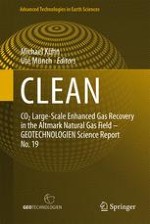2013 | Book
CLEAN
CO2 Large-Scale Enhanced Gas Recovery in the Altmark Natural Gas Field – GEOTECHNOLOGIEN Science Report No. 19
Editors: Michael Kühn, Ute Münch
Publisher: Springer Berlin Heidelberg
Book Series : Advanced Technologies in Earth Sciences
